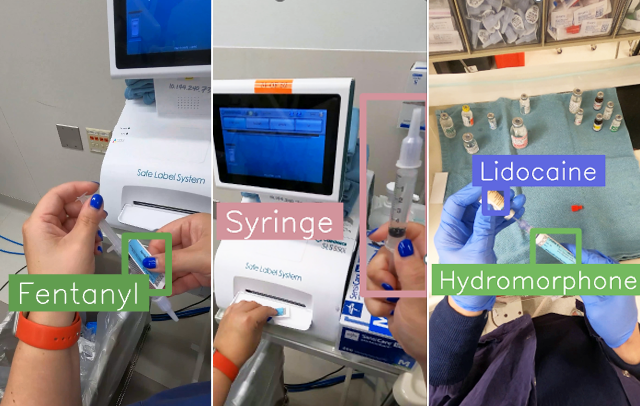A new wearable camera system developed by the University of Washington uses artificial intelligence to double-check that medication is not mixed up in clinical settings. The technology has proven to be highly accurate, with 99.6% sensitivity and 98.8% specificity in identifying vial mix ups. This system has the potential to prevent medication errors before they happen, providing an additional layer of safety in high-stress environments such as operating rooms and emergency departments.
Research shows that medication errors, particularly involving injected medications, are a significant problem in clinical settings. At least 1 in 20 patients experience a preventable error during drug administration, which can lead to harmful outcomes. These mistakes cost billions of dollars annually and impact over a million patients each year. The new camera system aims to address this issue by using AI to identify vials and syringes based on their size, shape, cap color, and label print size, rather than reading the labels.
The system does not read labels but uses visual cues to identify the contents of vials and syringes, making it suitable for real-world clinical settings where objects may not be fully visible. It may also incorporate an audible or visual signal to alert providers of potential errors before medication is administered. However, more testing is needed before the technology can be commercially available on a larger scale. Future improvements may involve training the system to detect more subtle errors or integrating it with other devices such as smart glasses for enhanced functionality.
The study, published in npj Digital Medicine, involved researchers from the University of Washington, Carnegie Mellon University, and Makerere University in Uganda. The Toyota Research Institute was responsible for building and testing the system, which has shown promising results in accurately identifying medication mix ups in clinical settings. Dr. Kelly Michaelsen, an assistant professor of anesthesiology and pain medicine at the UW School of Medicine, emphasizes the importance of preventing medication errors in real time to enhance patient safety and outcomes.
By using video snippets to capture moments in clinical settings, the AI system can analyze and identify what clinicians are holding in real-time. This technology has the potential to significantly reduce the frequency of drug administration mistakes, providing an extra layer of protection for patients in high-stress medical environments. With ongoing advancements and potential collaborations with other devices, the wearable camera system developed by the University of Washington has the capacity to revolutionize medication administration and improve patient care outcomes in the healthcare industry.


